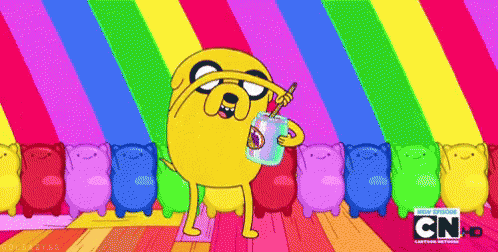 |
| Source: giphy.com |
Since the legalization of same-sex marriage in 2015, there has been a passionate and public explosion of LGBTQ pride. People are "coming out" with less fear and unapologetically being themselves. As teachers, we may be seeing the earliest signs of our students "coming out" in school. Some teens tend to feel more comfortable displaying their sexuality at school than at home, especially if they face the possibility of parental rejection. For some others, the opposite may be the case. They may feel scared to be themselves as a result of the possible bullying may occur in school. Regardless of the situation at hand, it is imperative that teachers provide support and frown upon bullying. However, teachers are human too and sometimes we are unsure of how to provide this support, especially with myths and mis-education on the topic of homosexuality. In this blog post, I will be providing some facts that educators should know and some tips for making these students feel safe with help from articles by Laura Erickson-Schroth, Sabia Prescott and Joe English of Education Weekly and Casey Leins of US News.
Who are Members of the LGBTQ Community?
According to gaycenter.org, "LGBTQ is an acronym for lesbian, gay, bisexual, transgender and queer or questioning. These terms are used to describe a person’s sexual orientation or gender identity" (Gay Center, n.d.). Just knowing the definition of LGBTQ already puts you on the path of better understanding but in many situations, that is not enough. As a teacher, the number one way to avoid offending a student is by doing your own research. This research can help debunk a lot of the misunderstanding and myths about the people of that community.
Myths about the LQBTQ Community
 |
| Source: Tenor.com |
There are numerous myths about the people of this community. The one that stood out to me the most in my research was that there are no laws protecting these people. According to Laura Erickson-Schroth, "Although transgender identities are becoming a more visible and accepted part of American life, laws are not keeping pace. There are no federal laws protecting transgender people from discrimination in employment, education, or health care" (Erickson- Schroth, 2017). From a teacher's perspective, this is saddening because there aren't any laws to protect our students from this mistreatment. The bright side is that, like I said earlier, through education there are less chances of offending students. That being said, there are states that are making it mandatory for schools to teach LGBTQ history. In my opinion, the more that this lifestyle is normalized, the less cases of bullying there will be. Bullying occurs in most cases to students who are different. By incorporating same-sex and trans education into education, there should be less cases of lesbian, gay or other being bullied. As Casey Leins cited in her article, These States Require Schools to Teach LGBTQ History, ""One of the best ways to overcome intolerance is through education and exposure to different people and viewpoints," said bill sponsor state Sen. Heather Steans (D-Chicago), according to the Washington Examiner"(Leins, 2019). This is exactly my point. The way to debunk these myths is through education.
Tips for Teachers of LGBTQ Students
 |
| Source: buzzfeed.com |
 |
| Source: Giphy.com |
In this blog, I also wanted to connect what I learned in my articles to the things we have studied in critical issues. The first thing that comes to mind is the prejudice and bias module. We watched the Laramie Project, which is about a young gay man who was tortured and killed because of his sexual orientation. As an application, it may be useful to show this film to older students. For example, I watched it in my 10th grade English class. It provides a morbid but very real perspective for students. The content is advanced yet packs a punch. To support this, I'll quote John English one more time. His 1st tip from his article was, "Know that your students are ready to discuss LGBTQ issues"(English 2019). These students need to be exposed to this information to them more formidable and understanding adults.
To close, teachers have this huge responsibility to protect and educate their students but sometimes, students may require more support. It's up to us to do the necessary research and provide the necessary resources in order to be considered an ally.
To close, teachers have this huge responsibility to protect and educate their students but sometimes, students may require more support. It's up to us to do the necessary research and provide the necessary resources in order to be considered an ally.
English, J. (2019). 10 Tips for Building a More LGBTQ-Inclusive Classroom. Retrieved from https://www.edweek.org/ew/articles/2019/10/11/10-tips-for-building-a-more-lgbtq-inclusive.html
Erickson-Schroth, L. (2017). Five Myths About Transgender Students Educators Need to Unlearn Retrieved from https://www.edweek.org/ew/articles/2017/07/11/five-myths-about-transgender-students-educators-need-to-unlearn.html
Leins C. (2019). These States Require Schools to Teach LGBT History. Retrieved from https://www.usnews.com/news/best-states/articles/2019-08-14/states-that-require-schools-to-teach-lgbt-history
Gay Center. (n.d.). Defining LGBTQ. Retrieved from https://gaycenter.org/about/lgbtq/
Prescott, S. (2019). What Teachers Need to Know to Do Right by Queer Students. Retrieved From https://www.edweek.org/ew/articles/2019/06/24/what-teachers-need-to-know-to-do.html


